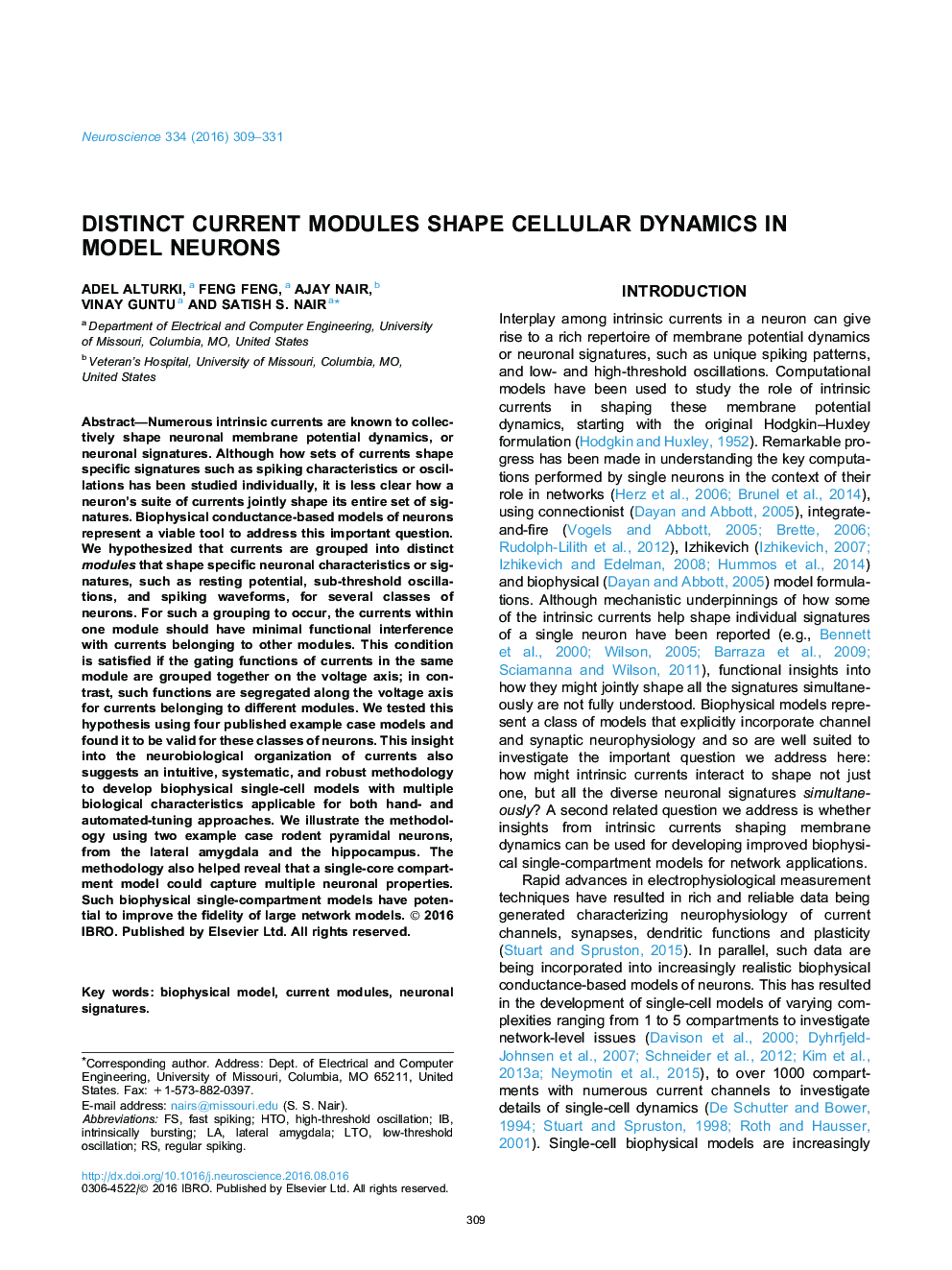| کد مقاله | کد نشریه | سال انتشار | مقاله انگلیسی | نسخه تمام متن |
|---|---|---|---|---|
| 6270780 | 1614742 | 2016 | 23 صفحه PDF | دانلود رایگان |
• Currents may be grouped into distinct modules that shape various membrane potential dynamics of neurons.
• Such groupings may be accomplished by segregating the activation functions of currents to minimize overlap across modules.
• The hypothesis was found to be valid for four classes of single neuron models in the literature.
• A single-compartment model was found to be sufficient to capture multiple neuronal properties for two classes of neurons.
• Suggest a method to develop single-compartment models with multiple signatures for classes of neurons, for use in networks.
Numerous intrinsic currents are known to collectively shape neuronal membrane potential dynamics, or neuronal signatures. Although how sets of currents shape specific signatures such as spiking characteristics or oscillations has been studied individually, it is less clear how a neuron’s suite of currents jointly shape its entire set of signatures. Biophysical conductance-based models of neurons represent a viable tool to address this important question. We hypothesized that currents are grouped into distinct modules that shape specific neuronal characteristics or signatures, such as resting potential, sub-threshold oscillations, and spiking waveforms, for several classes of neurons. For such a grouping to occur, the currents within one module should have minimal functional interference with currents belonging to other modules. This condition is satisfied if the gating functions of currents in the same module are grouped together on the voltage axis; in contrast, such functions are segregated along the voltage axis for currents belonging to different modules. We tested this hypothesis using four published example case models and found it to be valid for these classes of neurons. This insight into the neurobiological organization of currents also suggests an intuitive, systematic, and robust methodology to develop biophysical single-cell models with multiple biological characteristics applicable for both hand- and automated-tuning approaches. We illustrate the methodology using two example case rodent pyramidal neurons, from the lateral amygdala and the hippocampus. The methodology also helped reveal that a single-core compartment model could capture multiple neuronal properties. Such biophysical single-compartment models have potential to improve the fidelity of large network models.
Figure optionsDownload high-quality image (175 K)Download as PowerPoint slide
Journal: Neuroscience - Volume 334, 15 October 2016, Pages 309–331
